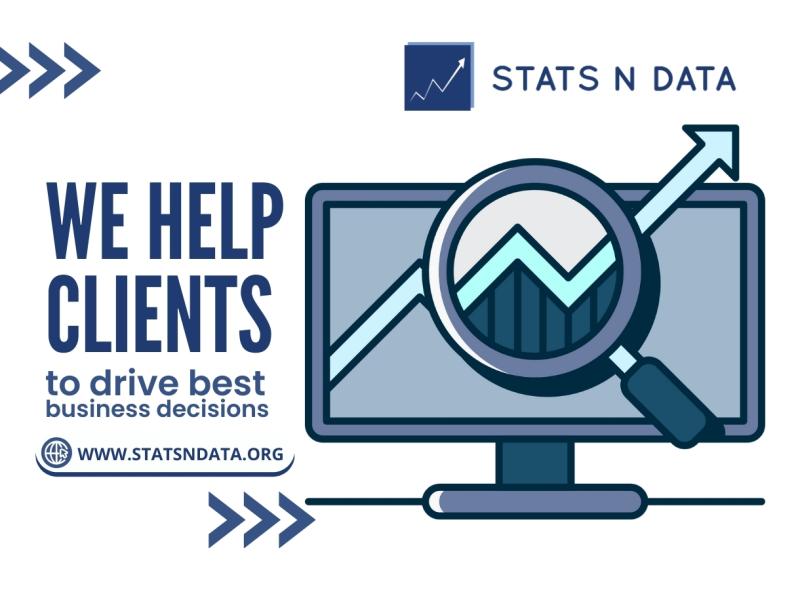
Fitness Market
The fitness market has experienced significant growth and transformation in recent years, driven by a surge in health consciousness among consumers. With an increasing emphasis on physical well-being, nutrition, and holistic lifestyles, the market is projected to grow at a compound annual growth rate (CAGR) of 5.50% from 2025 to 2032. This growth trajectory reflects a broader societal shift towards fitness and wellness, as individuals prioritize their health and seek innovative solutions to enhance their physical and mental well-being.
Several factors contribute to this anticipated growth in the fitness market. The rise of digital fitness solutions, including mobile applications, wearable technology, and virtual training platforms, has made fitness more accessible than ever before. Consumers are increasingly drawn to personalized fitness experiences that cater to their unique needs and preferences. In addition, the growing awareness of the benefits of regular exercise in preventing chronic diseases is prompting more people to adopt active lifestyles. As a result, the fitness market is expected to surpass an approximate valuation of $150 billion by 2032, reflecting the robust demand for fitness-related products and services that cater to a diverse range of consumers.
You can access a sample PDF report here: https://www.statsndata.org/download-sample.php?id=5431
Furthermore, the integration of fitness with wellness trends, such as mental health awareness and nutritional support, is enhancing the market’s appeal. The fitness industry is evolving beyond traditional gym memberships, encompassing a wide array of offerings, including home fitness equipment, wellness retreats, and community-focused fitness events. As the market continues to expand, it presents numerous opportunities for innovation and growth, positioning itself as a vital component of the overall health and wellness landscape. The positive outlook for the fitness market indicates a promising future as individuals increasingly prioritize their health and well-being in a rapidly changing environment.
The fitness market has witnessed remarkable evolution over the past few years, driven by a growing global emphasis on health and wellness. As individuals increasingly prioritize fitness as a cornerstone of a healthy lifestyle, the scope of the fitness industry has expanded dramatically. From traditional gym memberships to innovative home workout solutions, the fitness market encompasses a wide array of applications catering to diverse consumer needs.
Recent catalysts for growth in the fitness sector include technological breakthroughs and strategic partnerships that have reshaped how fitness services are delivered. The rise of wearable fitness technology, fitness apps, and virtual training has revolutionized the exercise landscape, making workouts more accessible and personalized than ever before. These advancements have enabled consumers to track their health metrics, engage with personal trainers virtually, and receive customized workout plans tailored to their fitness goals.
For executives, investors, and decision-makers, the fitness market presents actionable insights into shifting consumer behaviors and preferences. As the demand for effective workout solutions continues to rise, understanding the dynamics of the fitness industry will be essential for capitalizing on emerging opportunities.
Key Growth Drivers and Trends
Several key growth drivers are shaping the future of the fitness market. Sustainability is at the forefront, with consumers increasingly seeking eco-friendly fitness solutions. The digitization of the fitness experience has transformed how people engage with exercise, from virtual classes to online coaching, enhancing convenience and accessibility.
Shifting consumer expectations also play a pivotal role in market growth. People are now more informed about health, nutrition, and the benefits of various workout modalities, influencing their choices. As a result, fitness programs are becoming more tailored, with an emphasis on personalized experiences.
Transformative trends are emerging, driven by the integration of artificial intelligence (AI) in fitness applications. This technology enables customized workout plans, real-time feedback, and enhanced user experiences. Additionally, product customization has gained traction, allowing consumers to tailor their fitness regimens to their specific goals, whether it be weight loss, strength training, or increased flexibility through yoga and pilates.
The rise of high-intensity interval training (HIIT) has also gained popularity, with many fitness enthusiasts recognizing its effectiveness for weight loss and endurance building. Overall, the fitness market is evolving rapidly, fueled by innovation and a commitment to meeting diverse consumer needs.
Market Segmentation
The fitness market can be segmented into two primary categories: by type and by application. Each segment captures unique consumer preferences and market trends.
Segment by Type:
– Corporate Chain Gyms & Franchises
– Boutique Personal Training Studios
– Yoga Studios
– Pilates and Mind-Body Studios
– Luxury Brand or Country Clubs
Segment by Application:
– Men
– Women
Corporate chain gyms and franchises dominate the landscape with their extensive reach and diverse offerings. Boutique personal training studios cater to individuals seeking personalized attention, offering tailored workout plans and specialized training sessions. Yoga and pilates studios emphasize mind-body connection, attracting those interested in flexibility and balance.
Luxury brands and country clubs provide exclusive fitness experiences, often featuring high-end amenities and personalized service. The segmentation by application highlights the distinct preferences of men and women, enabling fitness providers to tailor their services effectively to meet the unique needs of each demographic.
Competitive Landscape
The competitive landscape of the fitness market is characterized by numerous players striving for market share through innovative offerings and strategic initiatives.
– 24 Hour Fitness has expanded its reach with new locations and enhanced digital offerings, making fitness accessible around the clock.
– CrossFit Inc continues to lead in functional fitness training, introducing new workouts and competitions to engage its community.
– Virgin Active focuses on premium fitness experiences, launching specialized classes and wellness programs tailored to diverse consumer segments.
– McFit has established itself as a leader in affordable fitness solutions, expanding its brand presence across multiple regions.
– Gold Gym emphasizes strength training, launching new equipment and training programs designed for varied fitness levels.
– ClubCorp offers a unique blend of fitness and social engagement, appealing to those who prioritize a community atmosphere.
– Central Sports combines traditional workouts with innovative technology, enhancing the customer experience.
– Life Time Fitness focuses on holistic wellness, providing nutrition counseling alongside workout programs.
– Planet Fitness emphasizes a non-intimidating gym environment, attracting newcomers to the fitness space.
– Equinox continues to redefine luxury fitness, offering high-end facilities and exclusive wellness experiences.
– Anytime Fitness caters to busy individuals with its 24/7 access and community-driven approach.
– LA Fitness remains a staple in the fitness market, providing diverse class offerings and personal training.
– Fitness First focuses on member engagement, launching challenges and community events to foster camaraderie.
– Konami Sports & Fitness integrates technology into fitness routines, launching gamified workout experiences.
These leading players are continuously innovating and adapting to the evolving fitness landscape, making strategic moves to enhance their market positions while addressing the diverse needs of fitness enthusiasts.
Opportunities and Challenges
The fitness market is ripe with opportunities for growth and innovation. Untapped niches, such as specialized fitness programs for seniors and children, present avenues for expansion. Additionally, evolving buyer personas indicate a shift towards more health-conscious consumers who prioritize personalized fitness experiences.
Monetization avenues, such as subscription-based fitness apps and virtual personal training sessions, are becoming increasingly popular. However, challenges remain, including regulatory hurdles related to health and safety standards, as well as supply-chain gaps that can hinder the availability of fitness products and equipment.
To navigate these challenges, fitness providers must adopt agile business strategies and explore partnerships to enhance their offerings. By staying attuned to consumer preferences and leveraging technology, companies can overcome obstacles and capitalize on emerging trends.
Technological Advancements
Technological advancements are at the forefront of transforming the fitness industry. Cutting-edge tools such as artificial intelligence (AI) are enabling personalized workout experiences, with apps that analyze user data to provide tailored fitness plans. Digital twins are being utilized to simulate user performance, allowing for optimized training regimens.
The Internet of Things (IoT) is enhancing connectivity within the fitness ecosystem, enabling smart home gym equipment to track performance metrics and provide real-time feedback. Virtual reality (VR) is revolutionizing workout experiences, offering immersive environments for users to engage in activities ranging from cycling to yoga.
Blockchain technology is also making inroads into the fitness market, enhancing data security and transparency in fitness transactions. As these technologies continue to evolve, they hold the potential to further enrich the fitness experience, making workouts more engaging and effective.
Research Methodology and Insights
STATS N DATA employs a rigorous research methodology to provide robust insights into the fitness market. Our top-down and bottom-up approaches ensure comprehensive coverage of industry dynamics, while primary and secondary data collection methods yield valuable information.
Our multi-layer triangulation process allows us to validate findings and deliver accurate market assessments. By analyzing consumer behaviors, market trends, and competitive landscapes, STATS N DATA positions itself as a trusted authority in the fitness sector, equipping stakeholders with the knowledge needed to navigate this dynamic market.
As the fitness industry continues to evolve, staying informed about emerging trends, consumer preferences, and technological advancements will be crucial for success. STATS N DATA remains committed to delivering actionable insights that empower fitness providers and investors to thrive in this vibrant market.
This press release encapsulates the current state of the fitness market, highlighting key trends, competitive dynamics, and technological advancements while positioning STATS N DATA as a leading authority in fitness research and insights.
Get 30% Discount On Full Report: https://www.statsndata.org/ask-for-discount.php?id=5431
In the ever-evolving landscape of the fitness market, a leading player found itself grappling with a critical challenge. Despite having a loyal customer base and a strong presence in the industry, they faced stagnation in growth. The surge of digital fitness solutions and boutique studios had created a competitive environment that threatened their market share. With traditional gym memberships declining and consumer preferences shifting towards personalized, on-demand fitness solutions, they recognized an urgent need to adapt. This key player, once a titan of the fitness world, was now at a crossroads, needing to innovate or risk obsolescence in a marketplace that was rapidly changing. The pressure to respond was immense, as both customers and investors began to question the company’s ability to remain relevant in a digital-first world.
In a bid to regain its footing, the company turned to advanced analytics to inform its strategic decision-making. By utilizing STATS N DATA analysis, the unnamed key player uncovered profound insights into consumer behavior and market trends. The analysis revealed a growing demand for hybrid fitness solutions that combined in-person experiences with digital offerings. This groundbreaking strategy involved redefining their core services, integrating technology into the customer experience, and creating a flexible membership model that catered to both traditional gym-goers and fitness enthusiasts who preferred at-home workouts. The company also identified key demographics that were under-served and tailored specific programs to meet their needs, thus establishing a targeted marketing approach that was data-driven and responsive. By embracing a holistic view of the fitness ecosystem, they were able to craft a strategy that not only addressed immediate challenges but also positioned them for long-term success.
The results of this strategic pivot were nothing short of remarkable. Within a year of implementing the new strategy, the company saw its market share increase significantly, capturing a broader audience that included tech-savvy millennials and health-conscious consumers. Efficiency improved as operations were streamlined, allowing for the better allocation of resources and a reduced overhead cost. Revenue soared, with the introduction of new digital programs and flexible membership options attracting a steady influx of new customers. The innovative approach not only revitalized the brand’s image but also reinforced their commitment to meeting the evolving needs of fitness enthusiasts. As a result, the company emerged from the brink of stagnation, transformed into a dynamic leader in the fitness market, capable of adapting to future trends and challenges.
For customization requests, please visit: https://www.statsndata.org/request-customization.php?id=5431
Q: What are the best exercises for weight loss?
A: The best exercises for weight loss typically include a combination of cardiovascular and strength training activities. Cardiovascular exercises such as running, cycling, swimming, and brisk walking are effective for burning calories and improving heart health. High-Intensity Interval Training (HIIT) is also highly effective, as it alternates short bursts of intense activity with periods of rest or lower intensity, maximizing calorie burn in a shorter amount of time. Strength training exercises, such as weight lifting, bodyweight exercises (like push-ups and squats), and resistance band workouts, help build muscle. Muscle burns more calories at rest than fat, which can contribute to weight loss over time. Incorporating a mix of these exercises into your routine, ideally three to five times a week, will yield the best results for weight loss.
Q: How can I build muscle at home?
A: Building muscle at home can be effectively achieved using bodyweight exercises, resistance bands, and dumbbells. Start with foundational movements such as push-ups, squats, lunges, and planks, which target multiple muscle groups. Gradually increase the intensity by adding more repetitions, sets, or variations of these exercises. If you have access to dumbbells or resistance bands, you can incorporate exercises like bicep curls, tricep extensions, and shoulder presses. To stimulate muscle growth, aim for 3 to 4 sets of 8 to 12 repetitions of each exercise, ensuring you challenge your muscles while maintaining proper form. Additionally, make sure to allow for adequate recovery between workouts and to consume enough protein to support muscle repair and growth.
Q: What should I eat before a workout?
A: Eating before a workout is essential for providing your body with the necessary energy to perform well. Ideally, you should eat a balanced meal or snack containing carbohydrates, protein, and healthy fats about 30 minutes to 2 hours before exercising. Good options include a banana with peanut butter, yogurt with fruit, or oatmeal with nuts. Carbohydrates are particularly important as they provide quick energy for your muscles, while protein can help with muscle repair and recovery. If you’re working out early in the morning, a small snack like a piece of fruit or a protein shake may be sufficient. It’s also important to listen to your body and find what works best for you in terms of timing and food choices.
Q: How often should I exercise to stay fit?
A: To stay fit, the general recommendation is to engage in physical activity for at least 150 minutes of moderate-intensity aerobic exercise or 75 minutes of vigorous-intensity exercise each week. This can be broken down into 30 minutes a day, five days a week. Additionally, it is important to include strength training exercises for all major muscle groups at least twice a week. This combination will help improve cardiovascular health, build strength, and maintain a healthy weight. However, individual needs may vary based on fitness levels, goals, and preferences, so it is important to find a routine that you can maintain consistently.
Q: What are the benefits of strength training?
A: Strength training offers numerous benefits that extend beyond just building muscle. It helps increase muscle mass, which can boost metabolism and promote fat loss. Additionally, strength training improves bone density, reducing the risk of osteoporosis as you age. It can enhance overall physical performance, making daily activities easier and reducing the risk of injury. Strength training also plays a vital role in improving mental health, as it can alleviate symptoms of anxiety and depression. Furthermore, it can improve insulin sensitivity, which is beneficial for blood sugar control. Overall, incorporating strength training into your fitness routine enhances both physical and mental well-being.
Q: How do I create a balanced workout plan?
A: Creating a balanced workout plan involves incorporating different types of exercise to ensure a well-rounded fitness routine. Start by determining your fitness goals, whether they are weight loss, muscle building, endurance, or overall health. A balanced plan typically includes cardiovascular exercise, strength training, flexibility work, and rest days. For example, you might schedule three days of cardio, two days of strength training, and incorporate stretching or yoga on your rest days. Ensure that you target all major muscle groups with strength training exercises and vary your cardio activities to keep things interesting. Additionally, listen to your body and adjust your plan as needed to prevent overtraining and promote recovery.
Q: What is the best way to improve my endurance?
A: To improve endurance, focus on gradually increasing the duration and intensity of your cardiovascular workouts. Start with a baseline of your current fitness level and aim to add 5 to 10 minutes to your workouts each week. Incorporate a variety of endurance activities, such as running, cycling, swimming, or rowing, to keep your routine engaging. Interval training, which involves alternating periods of high intensity with recovery, can also be beneficial for building endurance. Additionally, ensure you are fueling your body adequately with nutritious foods and staying hydrated, as proper nutrition and hydration are essential for sustained energy levels. Consistency is key, so aim to engage in endurance training several times a week.
Q: How can I stay motivated to work out regularly?
A: Staying motivated to work out regularly can be challenging, but there are several strategies you can employ. First, set clear and achievable fitness goals that give you something to work toward. Keeping a workout journal can help track your progress and celebrate small victories. Find workouts that you enjoy, whether it’s a group class, outdoor activities, or solo sessions, as this will make exercising feel less like a chore. Consider working out with a friend or joining a fitness community for social support and accountability. Additionally, varying your routine and trying new activities can keep your workouts fresh and exciting. Lastly, reward yourself for reaching milestones, which can provide extra motivation to stick with your fitness routine.
Q: What are the top nutrition tips for fitness?
A: Top nutrition tips for fitness include eating a balanced diet that incorporates a variety of foods to ensure you get essential nutrients. Focus on whole foods such as fruits, vegetables, whole grains, lean proteins, and healthy fats. Prioritize protein intake, especially after workouts, to support muscle recovery and growth. Stay hydrated by drinking plenty of water throughout the day and especially during and after exercise. Pay attention to portion sizes to avoid overeating, and consider meal prepping to make healthy choices more convenient. Avoid excessive sugar and processed foods, as they can hinder your fitness goals. Lastly, listen to your body’s hunger and fullness cues to maintain a healthy relationship with food.
Q: How can I safely start a new exercise routine?
A: Safely starting a new exercise routine involves a few key steps. First, consult with a healthcare provider, especially if you have any pre-existing health conditions or concerns. Begin with low-impact activities to assess your fitness level and reduce the risk of injury. Gradually increase the intensity and duration of your workouts over time. Aim for a balanced routine that includes cardiovascular, strength, and flexibility exercises. Make sure to warm up before and cool down after your workouts to prevent injury. Pay attention to your body’s signals, and if you experience pain or discomfort, adjust your routine accordingly. Lastly, be patient and give your body time to adapt to the new demands you are placing on it.
Q: What are effective home workouts for beginners?
A: Effective home workouts for beginners can be simple and require little to no equipment. Bodyweight exercises such as squats, lunges, push-ups, and planks are great options. You can create a circuit by performing each exercise for 30 seconds to 1 minute, followed by a short rest, and repeating the circuit 2 to 3 times. Incorporating activities like jumping jacks, mountain climbers, and chair dips can also add variety. If you have access to resistance bands or dumbbells, you can enhance your workout by adding exercises like bicep curls, tricep extensions, or shoulder presses. Aim for 20 to 30 minutes of exercise, and gradually increase the intensity as you become more comfortable. Online videos and apps can provide guidance and structure for your workouts.
Q: How important is hydration during exercise?
A: Hydration during exercise is extremely important as it affects your performance, recovery, and overall health. When you exercise, you lose fluids through sweat and breathing, which can lead to dehydration if not replenished. Dehydration can impair your ability to perform and can lead to fatigue, decreased coordination, and increased risk of injury. It is recommended to drink water before, during, and after your workouts, with specific hydration needs depending on the intensity and duration of the exercise. For longer workouts or in hot conditions, electrolyte-replenishing drinks may be beneficial. As a general rule, aim to drink at least 8 ounces of water before exercising and continue to hydrate throughout your workout.
Q: What should I include in my post-workout meal?
A: A post-workout meal should ideally contain a combination of carbohydrates and protein to aid in recovery and replenish energy stores. Carbohydrates help restore glycogen levels in muscles, while protein supports muscle repair and growth. Good options include a protein shake with a banana, Greek yogurt with berries and granola, or a chicken and vegetable stir-fry with rice. Aim to consume your post-workout meal within 30 to 60 minutes after exercising for optimal recovery. Including healthy fats, such as avocado or nuts, can also be beneficial, but should be balanced with carbohydrates and protein. Additionally, staying hydrated after your workout is crucial to replenish fluids lost during exercise.
Q: How can I track my fitness progress effectively?
A: Tracking your fitness progress effectively can help you stay motivated and make necessary adjustments to your routine. Start by setting specific, measurable goals, such as running a certain distance, lifting a specific weight, or achieving a target body composition. Use a fitness journal or app to log your workouts, including exercises performed, duration, intensity, and how you felt during the session. Regularly take measurements of your body, such as weight, body fat percentage, and circumferences, to gauge changes over time. Progress photos can also be a visual way to see changes in your physique. Additionally, consider keeping track of personal bests in terms of strength and endurance, as these milestones can provide motivation and a sense of accomplishment.
Q: What are the best stretches to do after a workout?
A: Stretching after a workout is crucial for improving flexibility and aiding in recovery. Focus on static stretches that target the major muscle groups you worked during your session. Some effective post-workout stretches include the standing quadriceps stretch, hamstring stretch, chest stretch, and shoulder stretch. Hold each stretch for 15 to 30 seconds, breathing deeply to help relax your muscles. Incorporating stretches such as the seated forward bend, butterfly stretch, and cat-cow stretch can also be beneficial for overall flexibility. Make sure to avoid bouncing during stretches, as this can lead to injury. Post-workout stretching can help prevent soreness and improve your range of motion over time.
Q: How can I incorporate yoga into my fitness routine?
A: Incorporating yoga into your fitness routine can enhance flexibility, balance, and mental well-being. Start by setting aside one or two days a week to focus on yoga, whether through classes, online videos, or personal practice. You can use yoga as a warm-up or cooldown for your workouts, or dedicate an entire session to yoga. Consider exploring different styles of yoga, such as Hatha for beginners, Vinyasa for a more dynamic flow, or Yin for deep stretching and relaxation. Integrating yoga into your routine can help improve your overall fitness by promoting mindfulness, aiding recovery, and enhancing body awareness. Remember to listen to your body and modify poses as needed to fit your comfort level.
Q: What are some fun fitness challenges to try?
A: Fun fitness challenges can keep your workouts exciting and help you stay motivated. Consider trying a 30-day squat or push-up challenge, where you gradually increase the number of repetitions each day. You could also set a challenge to complete a certain distance, such as running or walking a specific number of miles within a month. Group challenges, such as participating in a charity walk or run, can also provide a sense of community and purpose. Joining a fitness class for a month, trying new activities like rock climbing or dance classes, or setting personal goals like achieving a specific weightlifting milestone can keep you engaged in your fitness journey. Sharing your challenges with friends can add an element of accountability and fun.
Q: How do I choose the right workout equipment for home?
A: Choosing the right workout equipment for home fitness depends on your goals, available space, and budget. Start by identifying the types of exercises you enjoy and want to incorporate into your routine. If you are focusing on strength training, consider investing in a set of dumbbells, resistance bands, or a kettlebell. For cardiovascular workouts, options such as a jump rope, stability ball, or an indoor cycling bike can be effective. If you have limited space, opt for equipment that is versatile and can be easily stored, like resistance bands or a collapsible bench. Additionally, consider bodyweight exercises that require no equipment at all. It is essential to choose equipment that fits your fitness level and allows for progressive overload as you advance.
Q: What are the best cardio workouts for weight loss?
A: The best cardio workouts for weight loss are those that elevate your heart rate and burn calories effectively. High-Intensity Interval Training (HIIT) is particularly effective, as it alternates short bursts of intense exercise with recovery periods, maximizing calorie burn in a shorter amount of time. Other effective cardio workouts include running, cycling, swimming, and rowing, all of which can be adapted to your fitness level. Activities like kickboxing, dancing, or aerobics classes can also provide an enjoyable way to get your heart pumping. Aim for at least 150 minutes of moderate-intensity or 75 minutes of vigorous-intensity cardio each week for optimal weight loss. Remember to find activities that you enjoy, as this will help you stay consistent.
Q: How can I improve my flexibility quickly?
A: Improving flexibility quickly requires consistent stretching and mobility work. Incorporate dynamic stretching into your warm-up before workouts, focusing on movements that mimic the exercises you will be performing. After workouts, engage in static stretching, holding each stretch for 15 to 30 seconds to promote muscle relaxation. Consider incorporating yoga or Pilates into your routine, as these practices emphasize flexibility and mobility. Consistency is key, so aim to stretch at least a few times a week, focusing on all major muscle groups. Foam rolling can also help release tight muscles and improve flexibility. Remember to listen to your body and avoid pushing beyond your limits to prevent injury.
Related Reports:
Physiotherapy Market
https://www.statsndata.org/report/physiotherapy-market-9283
Commercial Vehicle Rental Market
https://www.statsndata.org/report/commercial-vehicle-rental-market-44409
Greenhouse Tomato Market
https://www.statsndata.org/report/greenhouse-tomato-market-91238
Investment Tracking Apps Market
https://www.statsndata.org/report/investment-tracking-apps-market-49802
ABS Resins Recycling Market
https://www.statsndata.org/report/abs-resins-recycling-market-73264
John Jones
Sales & Marketing Head | Stats N Data
Email: sales@statsndata.org
Website: www.statsndata.org
STATS N DATA is a trusted provider of industry intelligence and market research, delivering actionable insights to businesses across diverse sectors. We specialize in helping organizations navigate complex markets with advanced analytics, detailed market segmentation, and strategic guidance. Our expertise spans industries including technology, healthcare, telecommunications, energy, food & beverages, and more.
Committed to accuracy and innovation, we provide tailored reports that empower clients to make informed decisions, identify emerging opportunities, and achieve sustainable growth. Our team of skilled analysts leverages cutting-edge methodologies to ensure every report addresses the unique challenges of our clients.
At STATS N DATA, we transform data into knowledge and insights into success. Partner with us to gain a competitive edge in today’s fast-paced business environment. For more information, visit https://www.statsndata.org or contact us today at sales@statsndata.org
This release was published on openPR.

























































